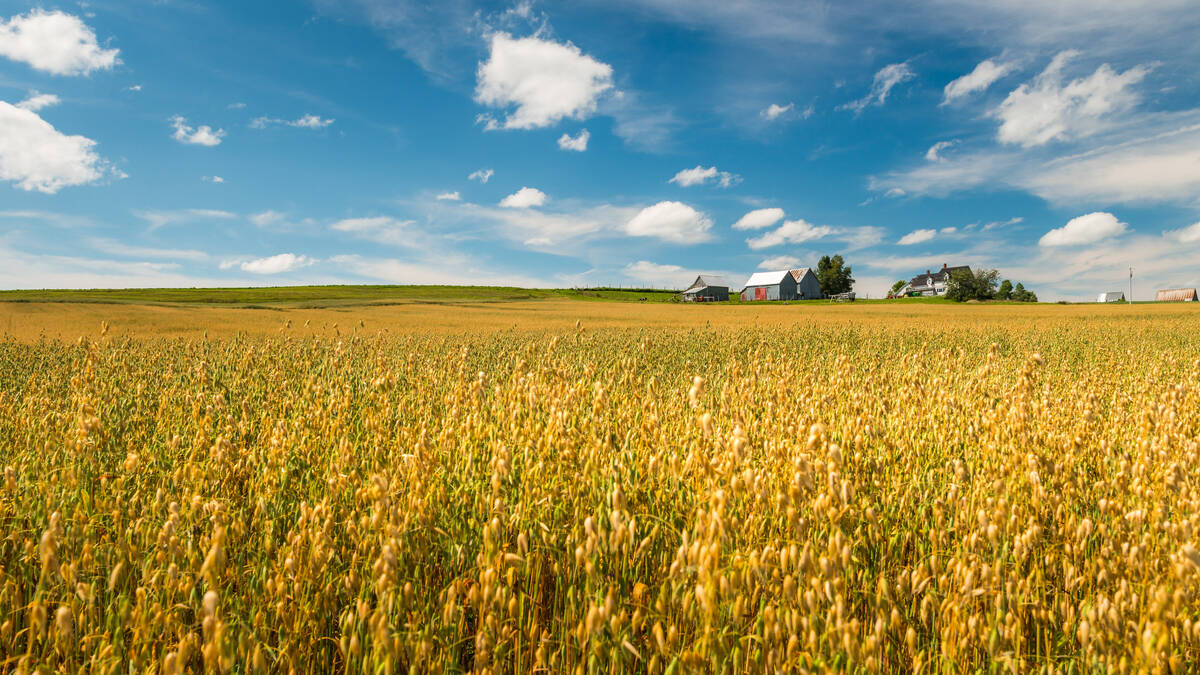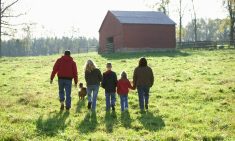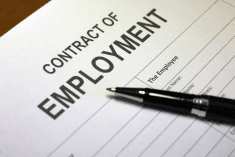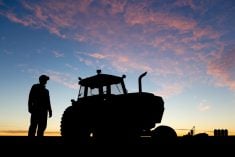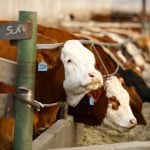Farmers are used to planning for the unpredictable: weather, commodity markets and environmental issues.
So, when Canadian farmers think about risk management their minds often go straight to the tangible: crop insurance, fire protection, equipment coverage and liability policies. These are essential tools, but they only tell half the story. What’s often missing from the conversation is the protection of the farm’s most valuable assets: its people.
Family-owned farms are unique in their structure and culture. They rely heavily on a small group of individuals — often family members — who wear multiple hats and carry deep operational knowledge. When one of these key people is sidelined by illness, injury or worse, the ripple effects can be devastating. Yet, few farms have a plan in place to manage this kind of risk.
Read Also

Tips for how to be fair to all siblings during farm succession
family walking through a field
Farm owners and operators can strengthen their risk management strategies by focusing on their “human capital” through life insurance, critical illness coverage, disability protection and key person insurance. These tools can safeguard the individuals who keep the farm running and ensure the long-term stability and continuity of the business.
Human capital: The hidden vulnerability
Human capital refers to the people who contribute their skills, experience and labour to the success of a business. On a family farm, this often includes the owner-operator, spouse, children and a few trusted employees. Unlike machinery or buildings, these individuals can’t be replaced with a purchase order or insurance claim.
Consider this scenario: a farm manager suffers a stroke in the middle of harvest season. They’re out of commission for weeks, possibly months. Who steps in to manage the team, make decisions and keep operations on track? If the farm hasn’t planned for this kind of disruption, the consequences can be severe: missed deadlines, lost revenue and long-term damage to the business.
Despite this risk, many farms lack formal plans to protect their people. It’s not due to deliberate negligence, but rather a cultural tendency to prioritize physical assets over personal ones. Farmers are resilient and self-reliant, often reluctant to think about worst-case scenarios.
But planning for human risk isn’t pessimism, it’s prudence.
Life insurance: A strategic tool for farm continuity and succession
Life insurance isn’t just about preparing for the worst. It’s also about creating financial solutions that protect your farm’s future. When structured properly, life insurance can serve as a multi-purpose tool that supports business continuity, succession planning and family harmony.
Operational stability: If a key person, such as the owner or a senior operator, passes away unexpectedly, life insurance provides immediate liquidity. These funds can be used to:
- Pay off outstanding debts or lines of credit.
- Cover ongoing operating expenses during a transition period, such as wages or salary for additional workers needed to fill the void.
- Fund a buyout of a deceased partner’s share in the business.
This financial cushion helps the farm avoid forced asset sales or disruptions in production and gives surviving family members time to make thoughtful decisions.
Succession planning and equalization: One of the most powerful uses of life insurance on family farms is in estate equalization. In many cases, one child continues farming while others pursue careers elsewhere. Life insurance allows farm owners to:
- Leave the farm assets (land, equipment, quota) to the farm successor.
- Use the life insurance payout to provide equitable financial gifts to non-farming children.
This strategy can prevent the division or sale of the farm to satisfy inheritance expectations, preserving the operation while maintaining fairness among siblings.
Tailored coverage: Farm owners can choose between term life insurance, which offers affordable coverage for a set period, and whole life insurance, which provides permanent coverage and builds cash value. A blended approach — using term insurance for short-term debt protection and whole life for long-term succession planning — can offer flexibility and cost-efficiency. It is important to remember that there is no “cookie-cutter solution” to your risk management needs. Your risk strategy should be specific to your farm and family’s unique requirements.
The key to making life insurance work as a strategic tool is customization. Work with a financial advisor who understands agricultural operations to help you:
- Assess your farm’s financial exposure.
- Identify key individuals whose loss would have an impact on the business.
- Structure policies that align with your succession goals and estate plan.
From here, a good advisor should be able to identify the risks and help create a plan that is both functional and feasible and ensures your farm’s exposure to risk is minimized.
Critical illness and disability insurance
While life insurance addresses the ultimate risk, critical illness and disability insurance protect against more common — and often more disruptive — events. These policies provide financial support when a key person is temporarily unable to work due to illness or injury.
Critical illness insurance pays a lump sum upon diagnosis of a covered condition, such as cancer, heart attack or stroke. This money can be used for medical expenses, travel for treatment or simply to cover lost income during recovery. For farmers, who often lack access to employer-sponsored health benefits, this coverage can be a lifeline.
Disability insurance, on the other hand, provides ongoing income replacement if someone is unable to work due to injury or illness. This is especially important for sole proprietors and family members who draw income directly from the farm’s operations. Without this protection, a prolonged absence can drain savings and jeopardize the business.
According to industry data, the average Canadian worker faces a one in three chance of being disabled for 90 days or more before age 65. For farmers, whose work is physically demanding and often isolated, the risk may be even higher. Having coverage in place ensures that recovery doesn’t come at the cost of the farm’s survival.
Protecting the irreplaceable
Every farm has individuals whose knowledge, leadership and decision-making are irreplaceable. Whether it’s the owner, a senior manager or a long-time employee, the sudden loss of a key person can leave a farm scrambling.
Key person insurance is designed to mitigate this risk. It provides a payout to the business to cover the costs of hiring temporary help, training replacements or restructuring operations if a designated individual dies or becomes disabled. This coverage is especially valuable for farms with specialized roles or limited staff.
To implement key person insurance effectively, farms should start by identifying who their key people are. This isn’t just about titles; it’s about who holds critical knowledge, relationships or responsibilities. Once identified, the farm can work with an advisor to determine appropriate coverage levels and policy structures.
Key person insurance is more than financial protection. It can buy time; time to regroup, reassign duties and make thoughtful decisions without being forced into reactive measures.
Building a resilient farm
Canadian farms are built on hard work, tradition and family. But they’re also businesses and like any business, they need a plan to weather uncertainty. Expanding risk management to include human capital means farm owners can protect not just their assets, but their legacy.
The most valuable asset on your farm isn’t in the barn or the field; it’s the people who show up every day to make it work.
Life insurance, critical illness coverage, disability protection and key person insurance are tools to manage risk and resilience. They ensure that when life throws a curveball, the farm can keep moving forward.
Andrew Leach is a farm succession advisor with Farm Life Financial. Leach’s focus is on promoting family harmony, creating tax efficiencies and maintaining financial viability for multi-generational farms across Canada.

